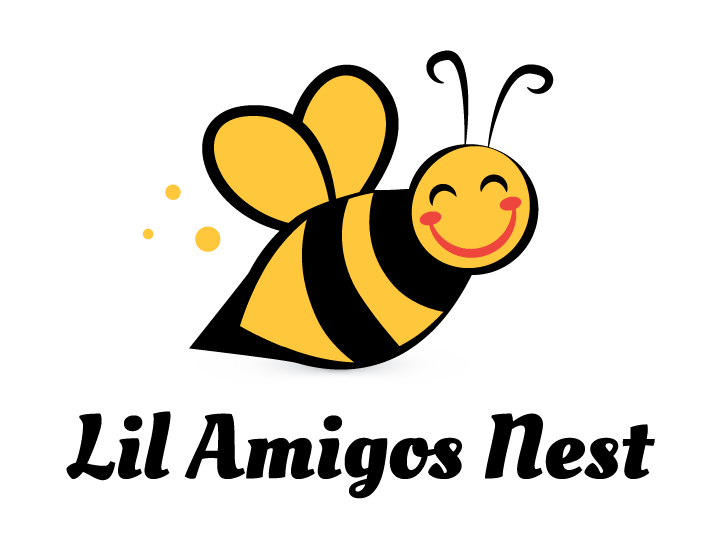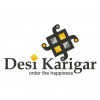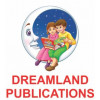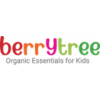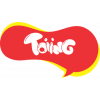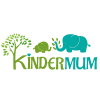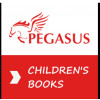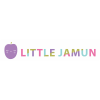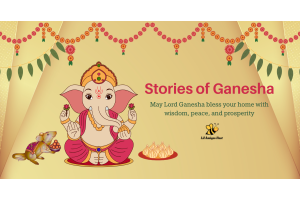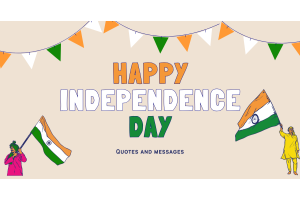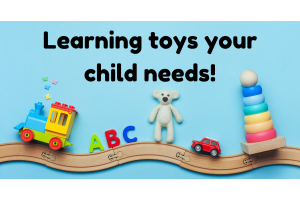Speech on Independence day
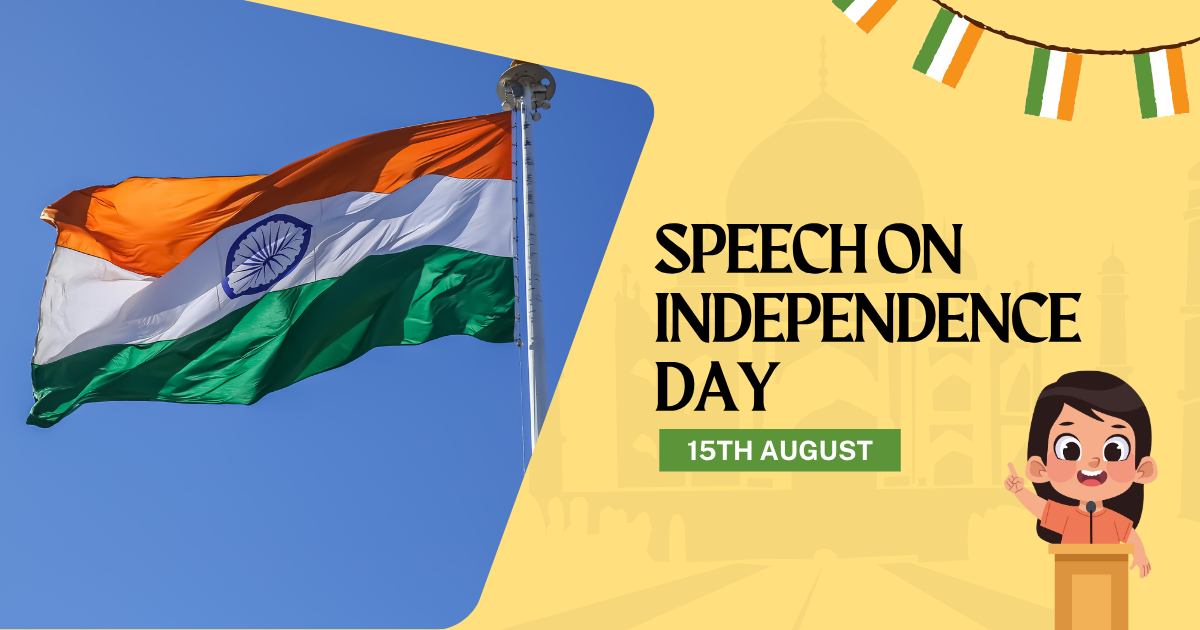
Every year on 15th August, our nation comes alive with pride and joy as we commemorate Independence Day India. This day marks the culmination of centuries of struggle, sacrifice, and unwavering determination by our Indian freedom fighters. It is not only a time to remember the past but also an opportunity to look forward together as one people. Today, schools across the country organize assemblies where students recite an Independence Day speech, perform patriotic songs, and listen to inspiring stories. A well-prepared speech for kids can ignite a lifelong sense of responsibility and patriotism.
Delivering a kids' speech or a speech on Independence Day is a cherished tradition in many classrooms. When young voices rise in unison to salute the tricolour flag, the entire audience feels the fervour of unity and liberty. From the youngest kindergartener to the eldest high schooler, everyone takes pride in understanding why this day is special. Through such speeches, we convey the values of freedom, equality, and justice to future generations, ensuring that the spirit of independence remains evergreen.
The Historical Journey to Freedom
The story of India’s freedom movement is a vivid tapestry woven with courage, sacrifice, and vision. Long before 1947, our country endured centuries of foreign rule. Yet, in the hearts of millions, the dream of freedom burned bright. Visionaries like Mahatma Gandhi, Jawaharlal Nehru, Subhas Chandra Bose, and Sardar Vallabhbhai Patel led diverse movements, from non-violent civil disobedience to more assertive calls for action. Each Indian freedom fighter contributed uniquely—Gandhi’s satyagraha taught the power of peaceful protest, while Bose’s Indian National Army exemplified unyielding resolve.
The journey was neither quick nor easy. The 1857 Sepoy Mutiny ignited the first major spark of revolt. In the early 20th century, the Home Rule Movement, Non-Cooperation Movement, and Civil Disobedience Movement mobilized millions. The Quit India Movement of 1942, launched by Mahatma Gandhi, marked the decisive crescendo in India’s struggle for independence. After years of sacrifice and negotiation, India finally broke the shackles of colonial rule on 15th August 1947, embracing freedom with an overwhelming sense of hope and possibility.
Significance of 15th August
Independence Day is not a mere date on the calendar; it is the embodiment of our collective hopes and dreams. Every year on 15th August, we honor the countless individuals who gave their lives so that we could live freely. The national flag—orange for courage and sacrifice, white for peace and truth, and green for faith and chivalry—symbolizes the unity of our diverse land. The Ashoka Chakra, with its 24 spokes, signifies progress and righteousness.
Schools, colleges, government offices, and communities across India host flag-hoisting ceremonies at dawn. The President’s address to the nation and the Prime Minister’s Independence Day speech in Delhi set the tone, reflecting on achievements and charting goals for the future. Children listen, wide-eyed, as they learn about India’s journey and their role in upholding its values.
The Role of Indian Freedom Fighters
Our Indian freedom fighters were more than leaders; they were beacons of light who guided millions toward the path of freedom. Figures like Bhagat Singh and Chandra Shekhar Azad displayed indomitable courage, willing to lay down their lives for the nation’s cause. Gandhi’s philosophy of non-violence influenced global leaders like Martin Luther King Jr. and Nelson Mandela. Sarojini Naidu and Annie Besant became the voices of women in the freedom movement, inspiring countless others to step forward.
Young readers marvel at stories of bravery—how Rani Lakshmibai of Jhansi rode into battle, how Subhas Chandra Bose crossed the seas to form the Azad Hind Fauj, and how Sardar Patel united princely states into the Indian Union. Learning these anecdotes in a speech for kids helps them grasp the magnitude of the sacrifice that laid the foundation of modern India.
How Independence Day Is Celebrated Today
On Independence Day, India transforms into a sea of tricolor. Streets are decorated with flags and bunting; shops display patriotic merchandise. Schools hold cultural programs featuring songs like “Vande Mataram” and “Jana Gana Mana.” Children play the roles of freedom fighters and enact pivotal moments from our struggle. Such activities infuse history with life, making it relatable and memorable.
Adults join in too—neighbors gather for kite-flying competitions, relishing the joy of the morning breeze against vibrant skies dotted with tricolored kites. Television channels air special documentaries and movies highlighting the freedom struggle. Social media buzzes with tributes and hashtags celebrating unity in diversity.
Writing an Effective Independence Day Speech for Kids
Crafting a memorable speech on Independence Day requires clarity, confidence, and heartfelt emotion. Here are some tips:
-
Start with a Greeting: Begin by respectfully addressing the chief guest, teachers, parents, and fellow students.
-
Define the Occasion: Clearly state that you are celebrating India’s freedom and mention 15th August.
-
Share Historical Facts: Briefly narrate the roles of Indian freedom fighters and milestones like the Quit India Movement.
-
Express Emotions: Convey how freedom feels—pride, gratitude, and responsibility.
-
Connect to Today: Explain why Independence Day still matters and how each citizen can contribute.
-
End with a Pledge: Invite everyone to promise to uphold national values and work for a better future.
Incorporating simple anecdotes—such as how a young child felt during their first flag-hoisting ceremony—can make the kids' speech engaging and relatable.
Teaching Children the Value of Freedom
Freedom is more than a historical event; it is a daily reality that must be cherished and protected. Parents and teachers can help children understand this value through small activities:
-
Story Time: Read age-appropriate biographies of freedom fighters.
-
Art & Craft: Encourage kids to draw the flag or make posters with patriotic slogans.
-
Role Play: Organize mini-plays reenacting moments from the freedom movement.
-
Discussion Circles: Let children share what freedom means to them personally.
By turning lessons into interactive experiences, we ensure that young minds truly internalize the importance of liberty, justice, and unity.
The Spirit of Unity in Diversity
One of India’s greatest strengths is its diversity—in languages, cultures, religions, and traditions. Independence Day India celebrates this diversity while reminding us of our shared heritage. Whether in Kashmir’s valleys or Kanyakumari’s shores, communities come together under one flag. Children learn that unity does not require uniformity; it thrives when differences are respected and celebrated.
Slogans like “Unity in Diversity” and “Ek Bharat, Shreshtha Bharat” (One India, Great India) echo in classrooms and auditoriums. These slogans form the heart of many speech for kids, teaching them that true patriotism includes empathy and cooperation.
Reflections on Modern India
As we move forward into the 21st century, India stands at the threshold of rapid development and global influence. From our booming tech industry to advances in space exploration, we embody the dreams of freedom fighters from decades past. Yet, challenges remain—poverty, inequality, and environmental concerns demand collective action.
On 15th August, leaders reflect on these issues in their speeches, urging citizens to maintain the spirit of service. Students learn about current missions like Chandrayaan and initiatives like Swachh Bharat, connecting historical struggles for freedom with contemporary quests for progress.
Independence Day is not just a celebration; it is a reminder of our shared history and collective responsibility. On 15th August, we bow to the memory of our Indian freedom fighters and renew our pledge to uphold the values they cherished. For young speakers, delivering a speech on Independence Day is both an honor and a duty—an opportunity to inspire peers and reaffirm national pride.
Let every child taking part in a kids' speech feel empowered to carry forward the legacy of courage, unity, and compassion. As our tricolour flutters high, let each of us commit to building an India that truly reflects the ideals of freedom and justice for all.
